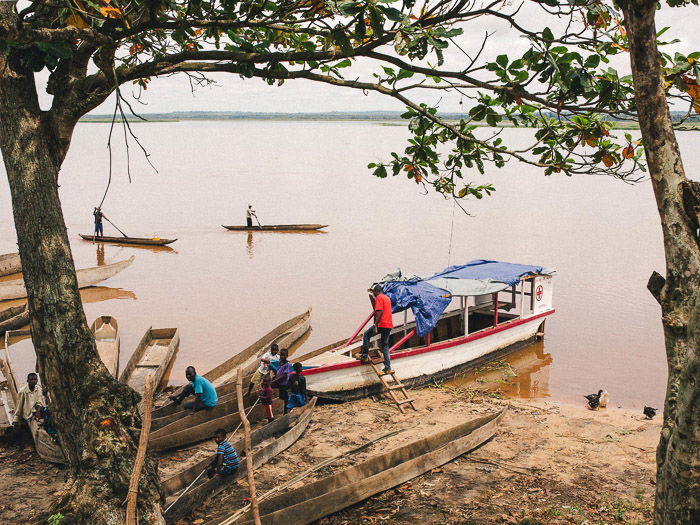How to Start a Career in Photojournalism
Photojournalism is one of the most rewarding genres of photography. But it’s not always easy to make a career out of it. It involves traveling and documenting real people and real events. And sometimes, they can be heavy topics.
But photojournalism allows you to tell stories and get the truth out into the world! If that sounds like something you want to do, continue reading. We’ll give you our top tips on how to become a photography professional in the photojournalism world.
What Is Photojournalism?
Photojournalism is a unique and powerful form of journalism that captures moments in time to tell a narrative through images. Unlike traditional photography, photojournalism focuses on the truth, presenting unaltered and unbiased snapshots of real events, people, and places.
Its purpose is to inform and engage the public, often evoking a strong emotional response. Photojournalists are tasked with the critical role of documenting history as it unfolds, ensuring that future generations have a visual account of today’s events.
The History of Photojournalism
Back in the 70s, photojournalists were highly regarded by newspapers and magazines. They were specialists in their field. Every media company or newspaper had an army of staff photographers. But those days are over.
The birth of the internet meant that editors stopped sending photographers around the globe on the company dime. But in the age of the internet, it’s easy for publications to get their photos almost instantly.
That doesn’t mean photojournalism is dead. But it takes hard work and dedication to your craft to make it a career today.
How to Become a Photojournalist
Before you start, it’s important to find out what genre of photography you want to shoot. Photojournalism is not easy, so you have to be sure when you want to take the step. Don’t be afraid to make mistakes to find out. It took me years to find out what genre of photography I loved, so don’t be discouraged.
I started with publicity and ended up doing documentary and travel journalism. This is what I love to do, and it has become my passion. If you want to build a career as a photojournalist, you have to specialize in the field.
A mistake many beginning photographers make is doing a little of everything. That makes it very difficult to get better and, more importantly, to get your photos noticed.

©Joris Hermans
1. Build a Website to Get Your Work Noticed
In today’s digital age, having an online portfolio is crucial for any photojournalist. A professional website serves as a central place to showcase your work, allowing editors, publishers, and the public to view and share your photos.
Your website should be visually appealing, easy to navigate, and updated regularly with your latest projects. Including a brief biography and contact information is also important for potential clients to reach you.
Wix is our top choice for the best website builder for photographers. It’s easy to use, affordable, and has tons of templates to create your perfect website.

2. Showcase Only Your Best Photos
Quality over quantity is a key principle when selecting photos for your website. Don’t upload hundreds of photos when you’re just starting out. Showcasing a few great photos is better than lots of mediocre ones.
Choose images that best represent your skills and the stories you want to tell. A well-curated portfolio should demonstrate your ability to capture moments with both technical proficiency and emotional depth. Consider organizing your photos into themed galleries or photo essays to provide context and showcase your storytelling abilities.

© Heather Milne
3. Learn Other Skills to Stand Out
In a competitive field like photojournalism, diversifying your skill set can make you more attractive to employers. Learning video production, audio recording, and editing can complement your photography skills, as many news organizations look for multimedia storytelling capabilities.
Familiarity with social media and digital marketing can also be advantageous, enabling you to share stories with a wider audience and engage directly with viewers.

© Pixabay
4. Photojournalism Takes Time and Dedication
5. How to Get Yourself Noticed
Getting noticed as a photojournalist involves more than just taking great photos. It’s also about how you market yourself and your work. Actively engaging with the photojournalism community through social media, photography forums, and industry events can increase your visibility.
Entering photography contests and applying for grants or awards can also provide recognition and opportunities for publication. Networking with other professionals in the field is crucial. Jobs and freelance opportunities often come through word-of-mouth recommendations.
Below are some great ways to get your photos noticed.

Make Your Own Photojournalism Stories
Creating your own photojournalism stories is a powerful way to develop your voice and showcase your style. Start by exploring your local community or regions that interest you, looking for untold stories, unique events, or pressing social issues.
Approach each project with curiosity and thorough research to understand the context and significance of the story. Focus on subjects you are passionate about. Your photographs will naturally convey a stronger message and connect more deeply with viewers.
Remember, compelling photojournalism often emerges from the most unexpected places and moments. Documenting these stories builds your portfolio and contributes to the broader narrative of our times.
Talk to People and Other Photojournalists
Engagement and communication are crucial in photojournalism. Talking to people, whether they are your subjects, community members, or fellow photojournalists, can open up new perspectives and opportunities. When working on a story, spending time with your subjects and listening to their experiences can provide invaluable insights and a deeper understanding of the context behind your photographs.
Additionally, connecting with other photojournalists can offer support, inspiration, and potential collaborations. These interactions can also help you navigate the ethical dilemmas and challenges that often accompany photojournalistic work.
Use Criticism to Your Advantage
Criticism, when constructive, is an invaluable tool for growth and improvement in photojournalism. It can come from editors, peers, or the audience, offering fresh perspectives on your work.
Learn to differentiate between constructive feedback and unhelpful criticism; the former provides insights into how you can enhance your storytelling, technique, or ethical considerations. Embrace critiques as opportunities to refine your vision and skills.
Participating in workshops or photo critiques can be particularly beneficial, as they provide a structured environment for feedback and learning.
Pitch Your Work
A well-crafted pitch can open doors to publications, galleries, and media outlets, turning your personal projects into published pieces that can reach a global audience. Research publications, websites, and other media outlets that align with the style and subject matter of your work.
Briefly introduce yourself and your project, highlighting what makes your story unique and why it's a good fit for the publication. Include key details about your story, such as the events, people, or issues it covers, and explain its significance. If you have a specific section or column of the outlet in mind, mention why your story is a good fit for that particular space.
Conclusion: Starting a Career in Photojournalism
Photojournalism is not an easy career. But learning how to become a photojournalist is rewarding. You’ll get to tell stories, add a human touch to your photos, and bring truth to power.
Check out our Organic Marketing for Photographers eBook to learn the fastest way to get your name out there as a professional photojournalist!





